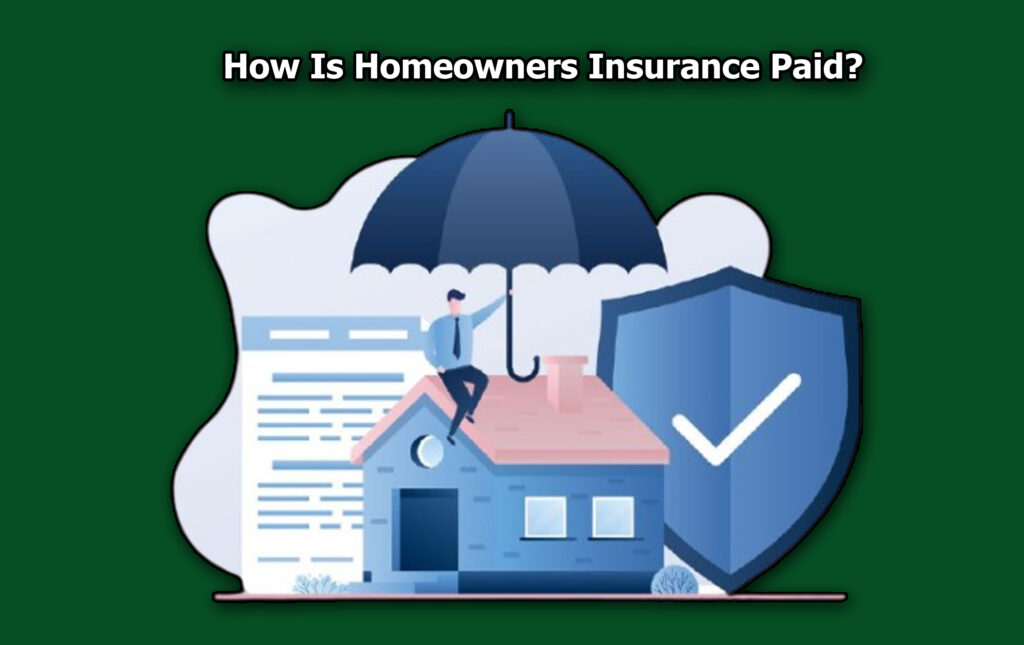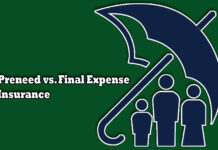Ever wondered how homeowners insurance are paid, like how it works? Whether you’re a first-time homeowner or just looking for clarity, understanding how these payments are handled can help you stay on top of your policy.

However, in this blog post, we will be enlightening you on how to go about the payment process of your homeowners insurance policy. Therefore, we implore you to stick with us to be enlightened.
In the meantime, homeowners insurance is usually paid in one of two ways: directly by the homeowner or through an escrow account set up by the mortgage lender.
So, if you have a mortgage, your lender may include insurance payments as part of your monthly mortgage bill, making payments on your behalf.
If you own your home outright, you’ll be responsible for making payments directly to your insurer.
This is why knowing how your insurance is paid can help you budget effectively and avoid lapses in coverage.
So, without further ado, let’s break down the different payment methods and how they can work for you.
How Is Homeowners Insurance Paid?
Homeowners insurance can be paid in two main ways: through an escrow account or directly to the insurance company.
If you have a mortgage, your lender might set up an escrow account to manage these payments. This type of account sets aside money for property taxes and homeowners insurance, ensuring they are paid on time. With an escrow account, you usually pay your home insurance annually.
However, if you don’t have an escrow account, you may have the option to pay monthly, quarterly, semiannually, or annually.
Understanding how escrow accounts relate to homeowners insurance and property taxes can sometimes be confusing.
While your insurance provider handles most of the paperwork, an escrow account helps ensure that essential payments are never missed.
Paying Homeowners Insurance Through an Escrow Account
Many homeowners with a mortgage use an escrow account to pay for their insurance. If your lender has set up an escrow account, a portion of your estimated yearly insurance premium and property taxes is added to your monthly mortgage payment.
These funds accumulate in the account, and when payments are due, your lender pays them on your behalf.
Lenders prefer this system because it protects their investment, ensuring that the home remains insured and taxes are paid on time.
Changing Homeowners Insurance with an Escrow Account
If you want to switch your homeowners insurance policy while using an escrow account, make sure there are no gaps in coverage.
Before canceling your current policy, confirm that your new policy is active and inform your lender. Once your lender updates their records, you can cancel your old policy without risk.
This prevents any lapse in coverage and ensures a smooth transition.
Paying Homeowners Insurance Directly to the Insurer
If you do not have a mortgage, you can pay your homeowners insurance directly to the insurance company.
This gives you more control over payment methods and scheduling. You can use a personal check, credit card, or electronic funds transfer, depending on what your insurer accepts.
Paying directly allows you to compare different providers and choose the best rate without needing lender approval.
This flexibility can help you save money and find better coverage suited to your needs.
Monthly vs. Yearly Homeowners Insurance Payments
The choice between paying monthly or yearly depends on your financial situation and preferences. Some insurers offer discounts for annual payments, which can help you save money. Here’s a closer look at each option:
Monthly Payments
These are easier to fit into a monthly budget and often align with mortgage payments if you use an escrow account.
However, monthly payments might come with processing fees, making them more expensive over time.
Yearly Payments
Paying once a year can qualify you for a discount and reduce overall costs. While this option requires a larger upfront payment, it can be more cost-effective in the long run.
Is Homeowners Insurance Paid in Advance?
In some cases, you may need to pay your homeowners insurance upfront. If your insurance is included in your closing costs when buying a home, it means you are pre-funding your escrow account.
Even without an escrow account, some lenders may still require upfront payment to ensure the home is covered before the mortgage is finalized.
How To Choose the Best Payment Method for Homeowners Insurance
How you pay for homeowners insurance can affect your budget and overall costs. Consider these factors when deciding:
Financial Situation
Determine if a one-time annual payment or smaller monthly payments work better for your budget.
Discount Opportunities
Check if your insurer offers discounts for paying the full annual premium upfront.
Payment Flexibility
Decide whether having control over your payment date and method is important.
Convenience
Consider whether monthly payments are easier to manage or if a single annual payment simplifies things for you.
If you have a mortgage, your lender might require monthly payments through an escrow account.
However, if you own your home outright or don’t use an escrow account, you can choose your preferred payment schedule. Just keep in mind that monthly payments may come with extra fees.



